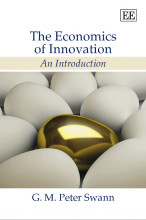Articles - Bresch et al (2000)
9 important questions on Articles - Bresch et al (2000)
This paper proposes that the specific pattern of innovative activities in an industry can be explained as the outcome of different technological (learning) regimes. Building on the Schumpeterian tradition, this paper starts from the recognition that there are two main patterns of innovation in industries.
A Schumpeter Mark II pattern (deepening) is associated
A Schumpeter Mark I pattern (widening) is the opposite. Then the specific pattern of innovation is explained by
- Higher grades + faster learning
- Never study anything twice
- 100% sure, 100% understanding
Schumpeter Mark I is characterised by `creative destruction' with
Schumpeter Mark II is instead characterised by `creative accumulation' with
A technological regime is defined by
Schumpeter Mark I ± Widening (Large and highly turbulent population of innovators):
(ii) Schumpeter Mark II ± Deepening (Concentrated and rather stable population of innovators):
The limitations of patent data are well known.
The question on the page originate from the summary of the following study material:
- A unique study and practice tool
- Never study anything twice again
- Get the grades you hope for
- 100% sure, 100% understanding
































